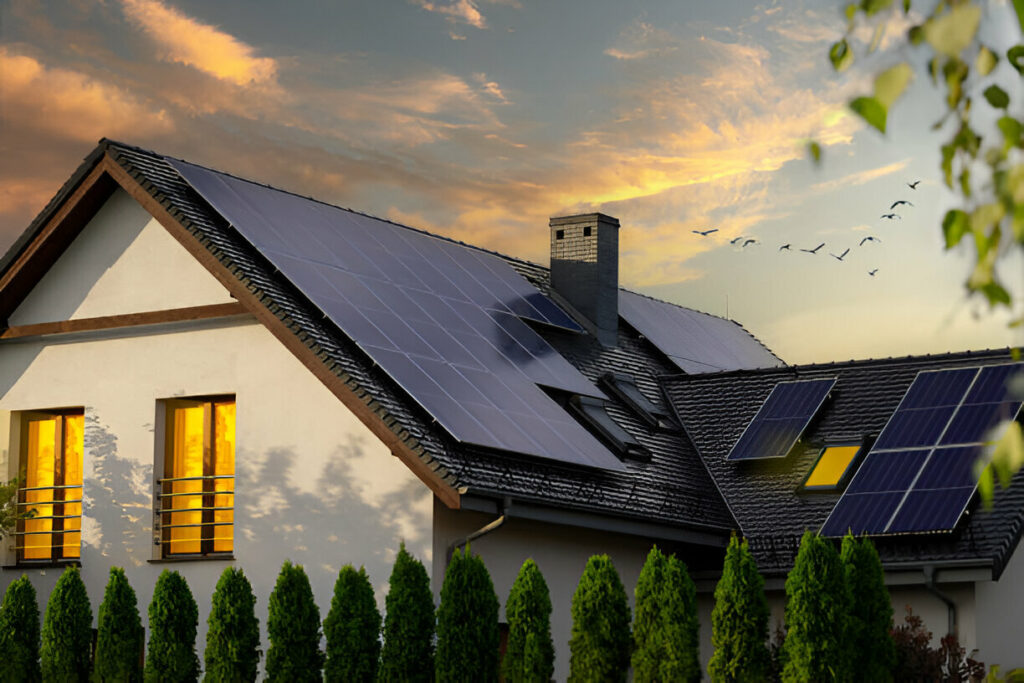Making your home energy-efficient isn’t just good for the environment; it’s also a smart way to save money on utility bills. The good news is that you don’t have to break the bank to achieve this. There are numerous ways to make your home more energy-efficient without spending a fortune. This guide will walk you through simple, budget-friendly steps to enhance your home’s energy efficiency room by room.
Why Energy Efficiency Matters
Energy efficiency reduces the amount of energy needed to perform everyday tasks, which not only cuts down on your utility costs but also decreases your carbon footprint. By using less energy, you help conserve natural resources and reduce pollution, contributing to a healthier planet.
Benefits of an Energy-Efficient Home
- Cost Savings: Lower utility bills due to reduced energy consumption.
- Environmental Impact: Decreased greenhouse gas emissions.
- Comfort: Improved indoor temperature control and air quality.
- Long-Term Value: Increased home value with energy-efficient features.
Kitchen Energy Efficiency
The kitchen is often one of the most energy-intensive areas in a home. Here are some budget-friendly tips to make it more efficient:
- Use Energy-Efficient Appliances: If you’re in the market for new appliances, look for ones with the ENERGY STAR label, which indicates they meet energy efficiency guidelines set by the U.S. Environmental Protection Agency.
- Optimize Cooking Methods:
- Use lids on pots to cook food faster and more efficiently.
- Cook multiple items at once in the oven to maximize heat usage.
- Consider using a microwave or slow cooker for meals, as they use less energy than traditional ovens.
- Reduce Standby Power Usage: Plug electronics into a power strip and turn it off when not in use to eliminate phantom energy drain.
Living Areas: Saving Energy in Common Spaces
Living areas can be made more energy-efficient with a few straightforward changes:
- Insulate Windows and Doors: Use weather stripping and curtains to prevent drafts and maintain indoor temperature.
- Switch to LED Light Bulbs: LEDs use up to 80% less energy than incandescent bulbs and last much longer.
- Adjust Thermostat Settings: Lower the heat in winter and raise it in summer when you’re away or asleep to save on heating and cooling costs.
Bedrooms: Comfortable and Efficient Sleeping Spaces
In bedrooms, focus on maintaining comfortable temperatures without wasting energy:
- Proper Insulation and Sealing: Ensure windows and doors are well-sealed to prevent heat loss in winter and gain in summer.
- Choose Energy-Efficient Bedding: Opt for bedding that suits the season to maintain a comfortable temperature without adjusting the thermostat.
- Manage Electronics Usage: Unplug or use a power strip for electronics to avoid standby power consumption.
Bathrooms: Water and Energy Savings
Bathrooms are ripe for energy and water efficiency improvements:
- Install Low-Flow Fixtures: Replace old faucets and showerheads with low-flow models to reduce water usage without sacrificing performance.
- Use Energy-Efficient Heating: Consider using a faucet or shower that heats water efficiently, or insulate hot water pipes to reduce heat loss.
- Conserve Water: Take shorter showers and fix any leaks promptly to save both water and the energy used to heat it.
Heating and Cooling: Key Areas for Efficiency
Heating and cooling systems consume a significant portion of a home’s energy. Here’s how to make them more efficient:
- Regular Maintenance: Clean or replace air filters regularly to ensure your system runs efficiently.
- Upgrade to Energy-Efficient Systems: If it’s time to replace your heating or cooling system, choose an energy-efficient model with a high SEER (Seasonal Energy Efficiency Ratio) rating.
- Use Programmable Thermostats: These thermostats allow you to set temperature schedules, so you’re not heating or cooling an empty home.
DIY Projects for Energy Efficiency
Engage in some do-it-yourself projects to boost your home’s energy efficiency:
- Make Draft Stoppers: Use old towels or fabric to create draft stoppers for doors and windows.
- Improve Insulation: Add insulation to attics and walls if they’re lacking, using materials like blown-in cellulose or fiberglass batts.
- Install Window Films: Apply reflective window films to reduce heat gain in summer and heat loss in winter.
Mindful Habits to Save Energy
Changing some daily habits can lead to significant energy savings:
- Turn Off Lights and Electronics: When a room is not in use, switch off lights and unplug electronics.
- Use Natural Light: Maximize daylight by keeping windows clean and using light-colored curtains or blinds.
- Wash Clothes in Cold Water: Whenever possible, wash clothes in cold water to save the energy used for heating water.
Government Incentives and Rebates
Many governments offer incentives and rebates for energy-efficient upgrades. Check with your local utility company or government websites for available programs that can help offset the costs of improvements like insulation, efficient appliances, or renewable energy installations.
Conclusion
Making your home energy-efficient on a budget is achievable with a combination of smart choices, thoughtful habits, and occasional small investments. Start with simple changes and build upon them over time. Not only will you reduce your environmental impact, but you’ll also enjoy the financial benefits of lower utility bills. Every step towards energy efficiency counts, so begin today and pave the way for a greener, more economical future.


